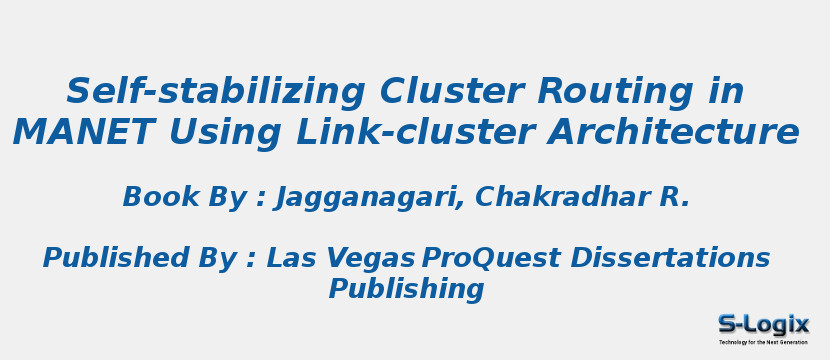Author(s) Name: Chakradhar R. Jagganagari
We design a self-stabilizing cluster routing algorithm based on the link-cluster architecture of wireless ad hoc networks. The network is divided into clusters. Each cluster has a single special node, called clusterhead that contains the routing information about inter and intra-cluster communication. The proposed algorithm assumes that all nodes have unique IDs. The algorithm achieves two tasks.
First, the set of special nodes (clusterheads) is elected such that it models the link-cluster architecture: any node belongs to a single cluster, is within two hops of the clusterhead, and knows the direct neighbor on the shortest path toward the clusterhead. Second, the routing tables are maintained by the clusterheads to store information about nodes both within and outside the cluster. There are two advantages of maintaining routing tables only in the clusterheads. First, as no two neighboring nodes are clusterhead (as per the link-cluster architecture), there exists no consistency problems. Second, since other nodes are responsible for forwarding only, they use less power. So, when the CH runs out of power, some neighboring node will be available to take on the task.
A self-stabilizing system has the ability to automatically recover to normal behavior in case of transient faults, without a centralized control. The MANET can start in some arbitrary state and with no knowledge of the network topology, but still eventually selects a set of clusterhead nodes (as specified by the link-cluster architecture) in a constant amount of time (2(time/spl I.bar/period+2)+n(time/spl I.bar/period+1)/2 time units, where n represents the total number of nodes in MANET). Then in these special nodes, routing tables are built with information about shortest paths for intra-cluster routing and shortest paths for inter-cluster routing (based on on-demand set of nodes).
ISBN: 9780542902321
Publisher: University of Nevada, Las Vegas
Year of Publication: 2005
Book Link: Home Page Url
